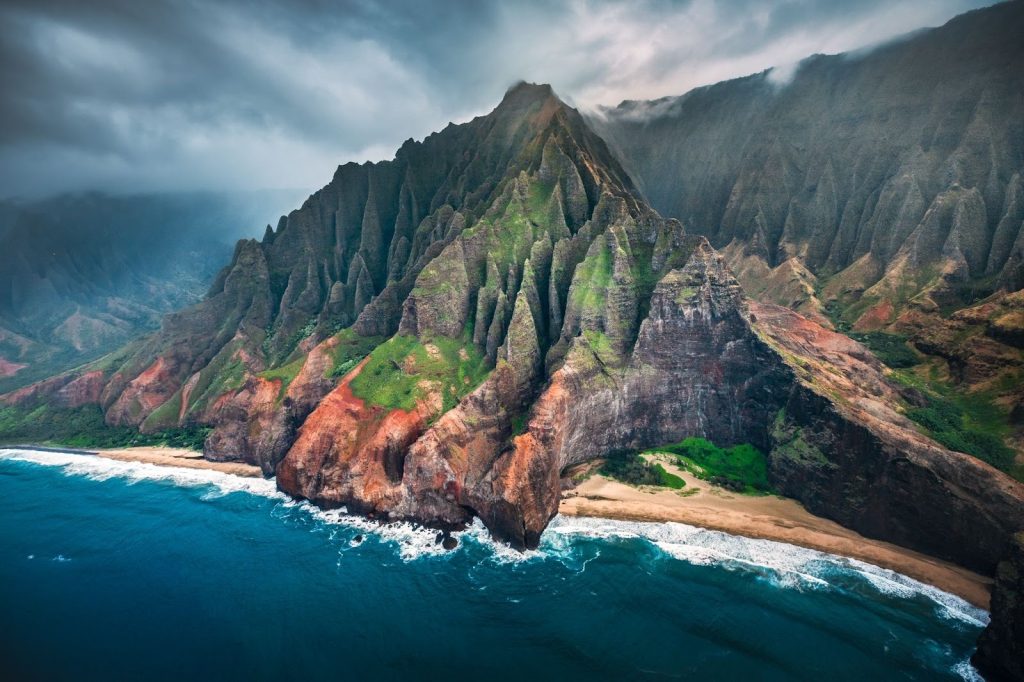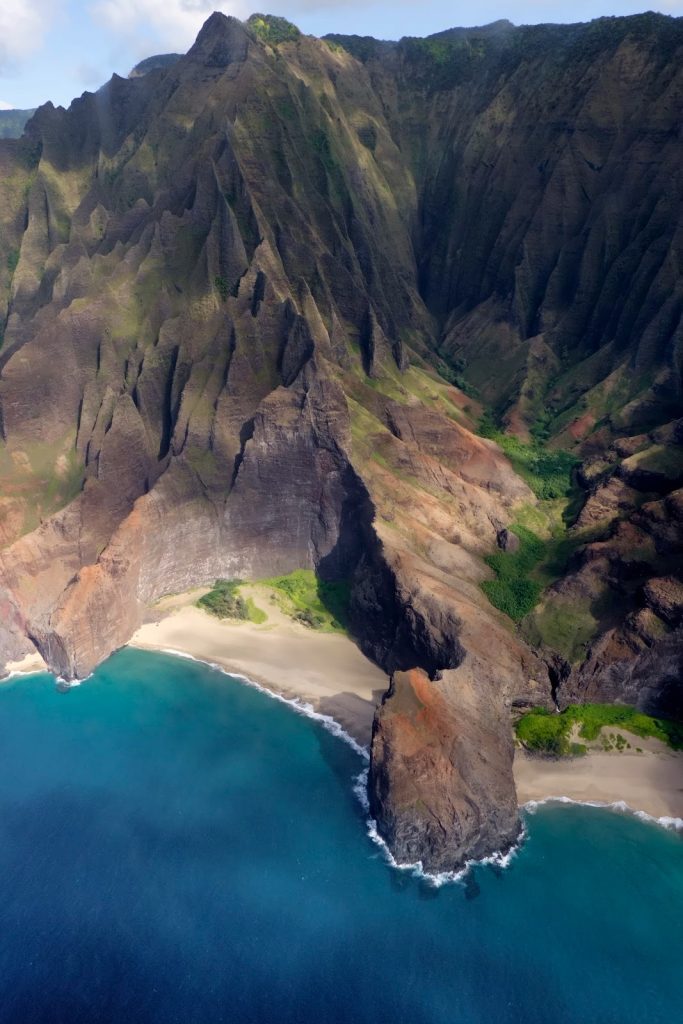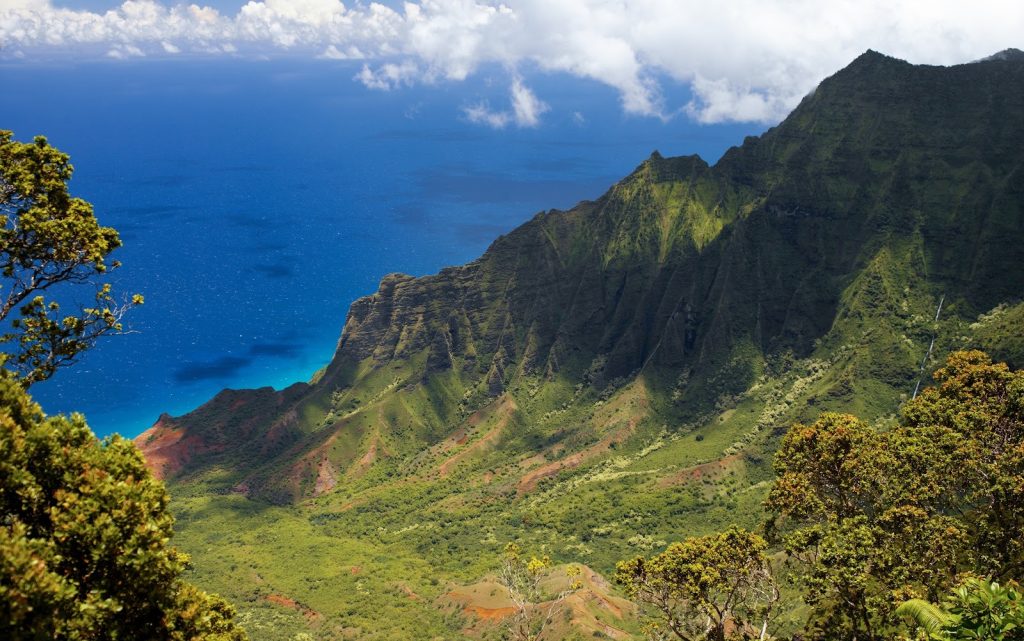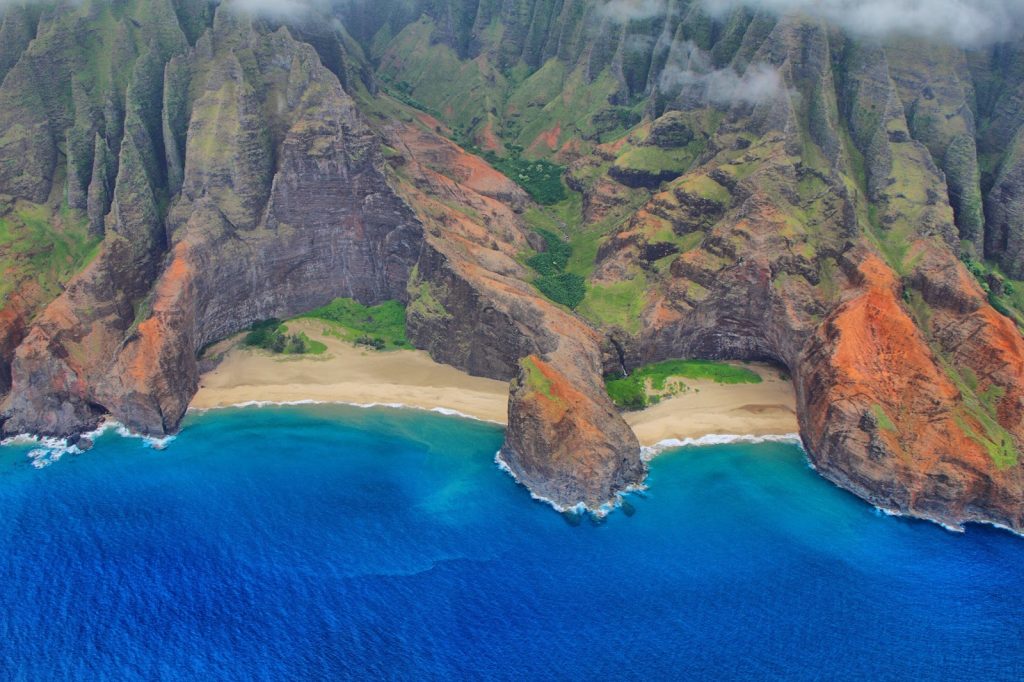
Along a coastline so striking it feels almost otherworldly, steep emerald cliffs rise from the Pacific Ocean and mist-shrouded valleys guard tales of the past. Welcome to Nāpali Coast, which is more than just a natural wonder.
For generations, the wild and breathtaking stretch of the island of Kaua’i has been the setting for countless mo’olelo (stories, legends and oral histories) that connect the land, sea and people of Hawai’i.
To truly appreciate the Nāpali Coast, you must shift your perspective and consider the place as a vessel of ancient and living culture, where the land itself holds memories and tales to tell.
In Hawaiian tradition, mo’olelo are not simply legends or folktales. They are teaching stories, carrying lessons about respect for the land and sea, proper conduct, and how the world works. They also explain the deep spiritual relationships between people and the natural world.
Along the Nāpali Coast, these stories are etched into every ridge and valley, from the sea caves of Honopū to the lush expanses of Kalalau.
One of the most striking and mysterious places along the Nāpali Coast is Honopū, which means “conch shell” and likely references the shell-like curves of the bays. Honopū is shrouded in myth, legend and history — and is known by several names.

Valley of the Echoes: Considered likely to have been given this name due to the resonant sound of wind moving through the massive Honopū Arch that collapsed in 1992.
Valley of the Lost Tribe: Folklore links Honopū to the Menehune, legendary little people of Hawai‘i who were said to have inhabited the islands long before Hawaiians and are credited with being skilled builders and artisans.
Archeological evidence is only able to verify that the valley’s human history belongs to kānaka maoli (Native Hawaiians), who cultivated crops and lived along its shores.
Valley of the Kings: According to oral tradition, the towering cliffs of Honopū once served as a sacred burial ground for ali’i (chiefs). Only partly because of this, the valley holds a strong spiritual presence and significance, making Honopū Beach and Valley a place to approach with reverence, never casual curiosity.
Kalalau, the largest valley along the Nāpali Coast, is a place of both history and legend. Archaeological evidence shows that Hawai’i’s indigenous people lived and thrived here for many centuries before Western contact. They cultivated kalo (taro) in intricate stone-walled terraces and fished in the rich coastal waters. Land-use records in the Hono-O Nā Pali Reserve reveal extensive irrigated fields in Kalalau and nearby Honopū and Pohakuao valleys that were used for taro until abandonment around the early 1900s.
In Hawaiian tradition, Kalalau is also a place of spiritual significance and said to be watched over by supernatural guardians. Stories speak of mo’o (powerful water spirits) that can take the form of giant lizards or beautiful humans. They protect freshwater sources and sacred places. Some accounts describe Kalalau as a valley watched over by such spirits.

Visitors who fail to respect the land and its resources may find themselves turned back by sudden changes in weather, rough seas or an unshakable sense that they do not belong.
These mo‘olelo remind us that Kalalau is more than breathtaking — it is a living, sacred place where history, culture and spirit remain deeply connected.
While Pele, Hawaiʻi’s volcanic goddess, is most closely associated with Kīlauea on Hawai’i Island, far to the south of Kaua’i, her influence and mo’olelo span across the entire Hawaiian archipelago.
Some traditions recount that Pele first landed on Kaua‘i, pausing at locations that include Ha’ena or the “wet caves” where she attempted to establish a home but was confronted by her elder sister Namakaokaha‘i, goddess of the sea.
One detailed legend tells of a cosmic confrontation between Pele and her sister Namakaokaha’i for possession of the land. This epic battle, fire against water, is said to explain the dramatic landscapes of Kaua’i, including the ruggedly beautiful cliffs of Nāpali.
Pele’s connection to Kaua‘i also emerges in the saga of Hi‘iaka, her younger sister. At Pele’s request, Hi‘iaka traveled from Hawai‘i Island to Kaua‘i to retrieve Lohi‘au, a chief of Ha‘ena whom Pele had seen in a dream. This epic tale weaves the caves, cliffs and valleys of Kaua‘i into the broader mythology of Hawai‘i, connecting Nāpali to stories that span across islands and generations.

The mo’olelo of the Nāpali Coast are not relics of the past. They are part of a living tradition, passed from generation to generation, and they guide how kānaka maoli relate to these sacred places.
For visitors, learning these stories offers more than cultural background. It deepens your connection to the land and creates respect for why the Nāpali Coast is so deeply cherished and protected. It is a chance to move beyond the postcard view and into a relationship with the coast’s mana (essential energy/spiritual power).
As the Hawaiian proverb says: “I ka wā ma mua, ka wā ma hope.” It translates to: “The future is in the past.”
By learning and honoring the stories of this coastline, we help ensure that its mana endures for generations to come.
For readers who wish to deepen their connection to and knowledge of the Nāpali Coast, these resources provide cultural, historical and mythological context from trusted sources and community knowledge.